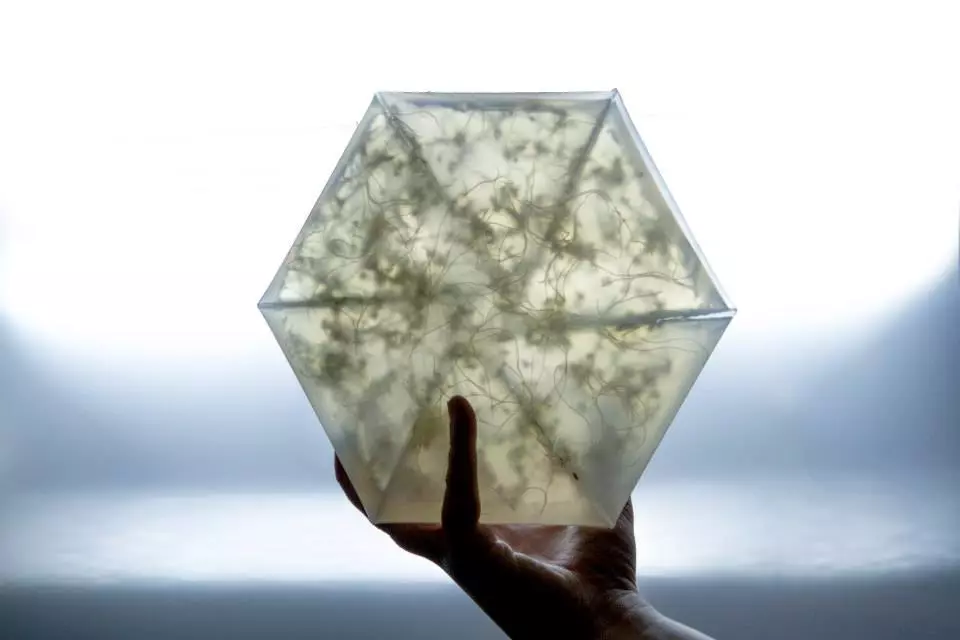Once thought of as an urban hippy fad, the concept of growing produce in the inner-city has started to become more of an accepted idea. Not only does it give urban gardeners the chance to get in touch with their inner farmer, but it also helps supplement the vegetable portion of the daily diet. For Infarm, the idea of grow-your-own comes in the form of a small, origami-like greenhouse, specifically designed to grow tiny baby greens known as microgreens.
Developed by Infarm out of Berlin and Tomorrow Machine of Stockholm, the Microgarden growing kit is not only a simple concept, but also aesthetically interesting. Made out of a translucent waterproof material, when folded flat the Microgarden greenhouse resembles a hexagonal star. But when folded into its origami shape using the provided instructions, it becomes a conical structure capable of growing tasty microgreens in only two weeks.

Growing the microgreens is perhaps easier than putting your origami skills to the test. Once the greenhouse is folded to its functional state, owners simply add seeds to the seaweed-based agar gel growing mixture, close the top and hide in the dark for three days. After the darkness phase, the micro greenhouse is then moved into the light for another seven to 10 days. Once the little greens have reached their optimal micro-height, they are ready to eat.
The Microgarden kit is currently part of an Indiegogo crowdfunding campaign, and has already exceeded its campaign goal of €15,000 (about US$20,500). Kit pledges start at €20.
For those looking to populate their plates with more than just tiny greens, Infarm will design and build a vertical farm capable of producing fresh greens year round for €7,200. If all goes according to plan, micro-gardeners can expect shipping to start in September.
You can see the campaign pitch video below.










